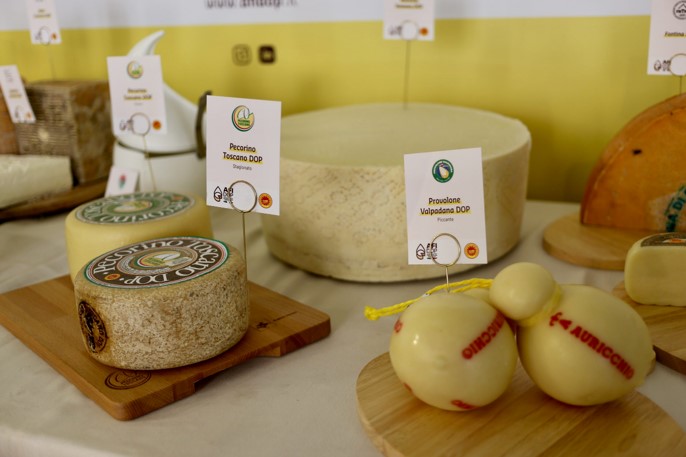By infopadweb 9 May 2024
DOP-IGP CHEESES AND CATERING: 2 STRATEGIC SECTORS OF MADE IN ITALY AMONG GROWING NUMBERS
The Guidelines arrive at a favorable time for consumption outside the home. Despite inflation and the uncertainty of the international context, the sector recorded a +7% in value in 2023, for a total of 92 billion euros spent on food consumption outside the home. Catering has therefore returned above pre-Covid levels (+3.9%), a growth that is also driving employment in the sector, which has also finally returned above pre-pandemic levels: today they have over 1 million employees.
Even for the 55 Italian DOP and IGP cheeses, the period seems to be favorable. According to AFIDOP, compared to 590 thousand tonnes produced in 2023 (+2.7% compared to the previous year), the supply chain records a production turnover that now goes well over 5 billion euros, equal to almost a third of the total value to the production of Italian dairy products. Exports are also growing: DOP-IGP now permanently represent almost 60% of the export turnover of national cheeses, for an estimated value of almost 3 billion euros (+11%) and a growth in volume of over 4% world level. Driving the good export performance are above all Grana Padano, Parmigiano Reggiano and Pecorino Romano in some of the most important non-European markets such as the United States and Japan.
2024 also opened with growing data: in January Grana Padano and Parmigiano Reggiano (+25% in volume) were the driving force; Gorgonzola (+7%), Pecorino Romano (+4%) and hard grated DOP (+16%) also performed well.
The sector currently employs around 24,600 people.
Looking at these numbers, the synergy between the two sectors appears extremely fruitful, especially since both have been fighting for years one of the most subtle battles that Made in Italy can experience: that of countering Italian sounding, the practice of imitate Italian agri-food products for fraudulent marketing purposes, through the use of names, images, color combinations (such as the tricolor) that unequivocally evoke the Italian horizon, in an attempt to exploit the appeal of our home agri-food industry. The turnover deriving from Italian sounding, unfortunately for our country, is, according to the latest ISMEA-MASAF report, more than 90 billion. Almost double the export of authentic Italian agri-food products, which the report estimates at 58 billion.
Italian sounding is a phenomenon that is spreading like wildfire, increasingly including places such as bars, restaurants and pastry shops. They offer services that are completely similar to those of the original Italian venues and even go further, implementing real plagiarisms. Restaurants and pastry shops that have the same layout as those present in the metropolises of our country, the same logos, the same offer. At least on paper. In reality the menus of these pseudo “Italian restaurants” have nothing to do with those they claim to imitate, without knowing their quality. A real counterfeiting of Italian cuisine, according to a 2021 Fipe Study Center survey aimed at certified Italian restaurants abroad, which showed that in their countries 94% detect counterfeiting of products in non-certified competitors, 89% see counterfeit recipes, which do not conform to the authentic ones, while 60% find fake Italian restaurants and 43% have doubts about the origin of the products. According to FIPE estimates, there are around 600 thousand restaurants in the world that call themselves Italian. Of these only 2,218 really are.

